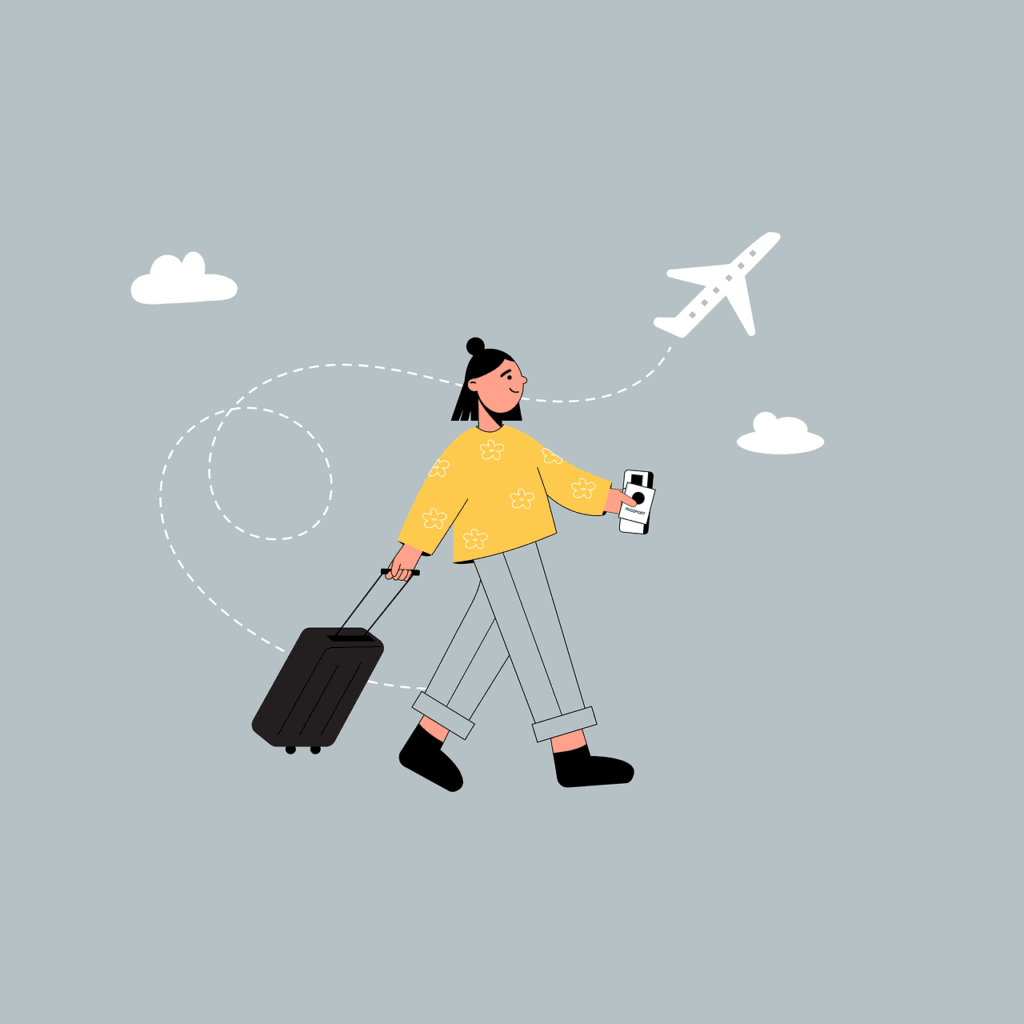This Article has been revised, edited and added to, by Poulomi Chakraborty.
- The Importance of Understanding Audience Diversity
- Tailoring Content Across Demographics
- Analyzing Engagement Patterns
- The Impact on Conversion Rates
- Crafting Persona-Based Marketing Strategies
- Analyzing and Segmenting Audience Data
- Integrating Cultural Sensitivity into Marketing Efforts
- Leveraging Technology for Hyper-Local Marketing
- Continuous Learning and Adaptation
- Leveraging Local SEO for Global Reach in Travel Marketing
- Harnessing Digital Marketing Tools and Techniques for Travel Success
- Exploring Essential Digital Marketing Tools
- Effective Digital Marketing Techniques
- Enhancing Engagement Through Interactive Content
- Integrating Advanced Analytics for Predictive Marketing
- Utilizing Dynamic Pricing Tools
- Expanding Reach Through Strategic Content Syndication
- Implementing Omni-Channel Marketing Campaigns
- Embracing Innovative Marketing Trends in the Travel Sector
- Strategies for Building and Maintaining Customer Loyalty in the Travel Industry
- Conclusion: Mastering Digital Marketing in the Travel and Tourism Sector
In a world that’s constantly connected, digital marketing in the travel and tourism sector has become essential, not just a luxury. It’s about crafting experiences, stories, and memories through strategic online engagement. As this industry spans globally, the challenge is not only to reach wide audiences but to resonate with them, transforming clicks into journeys and browsers into travelers.
The Importance of Understanding Audience Diversity

When diving into digital marketing for travel and tourism, understanding the diversity of your audience is crucial. This sector isn’t limited to one kind of traveler; it includes everyone from the luxury solo traveler looking for an exotic getaway to families planning budget-friendly vacations. Each group uses digital platforms differently, searches for varying pieces of information, and has distinct triggers that lead them to book their next trip. By comparing how different demographics interact with digital content, marketers can tailor their strategies to be more effective and inclusive.
Tailoring Content Across Demographics
Consider two primary traveler profiles: the Millennial adventure seekers and Baby Boomer culture enthusiasts. Both groups are active online but have different behaviors and preferences that influence how they consume travel content.
Millennial Adventure Seekers Millennials often look for experiences rather than just destinations. They use platforms like Instagram and TikTok to find inspiration. They prefer content that is visually appealing and shareable. For this group, marketing tactics might include influencer collaborations, user-generated content campaigns, and immersive video content that highlights adventure and authenticity.
Baby Boomer Culture Enthusiasts On the other hand, Baby Boomers are more likely to prioritize comfort and cultural experiences and often use Facebook and travel blogs to gather information. They appreciate detailed articles, customer reviews, and safety information. For Boomers, effective tactics might involve newsletter marketing, featuring detailed travel guides, virtual tours, and highlighting experiences tailored to accessibility and leisure.
Analyzing Engagement Patterns
By examining engagement patterns, we notice that Millennials are quick to interact with new posts, especially those featuring novel destinations or unique travel hacks. They value quick, digestible content and are more likely to engage with posts that feature a strong call to action, like “Book now for a 10% discount!” or “Join our webinar to learn more!”
In contrast, Baby Boomers spend more time on content before engaging. They value thoroughness and are more likely to respond to content that offers substantial information. They prefer calls to action that reassure and provide additional support, such as “Call us today to speak with a travel expert!” or “Subscribe to our newsletter for exclusive insights!”
The Impact on Conversion Rates
These differences in engagement also affect conversion rates. For Millennials, instant booking options linked directly from social media ads can lead to higher conversion rates. Meanwhile, Boomers may respond better to promotions offered through emails that link to a page providing detailed itinerary information and customer testimonials, which help in making informed decisions.
Crafting Persona-Based Marketing Strategies
Startup founders should consider developing detailed customer personas that go beyond basic demographic information like age and location. These personas should include psychographic elements such as values, interests, and lifestyle choices. For instance, a persona could be a ‘Cultural Explorer’ who is not just defined by their age group but by their deep interest in history, local cuisine, and arts. Understanding these subtleties allows startups to craft marketing messages that resonate on a personal level, making potential customers feel uniquely understood and valued.
Analyzing and Segmenting Audience Data
It is crucial for startups to invest in data analytics to better understand the nuances within their target markets. Analyzing data from website traffic, social media interactions, and customer feedback can reveal patterns and preferences that may not be immediately obvious. This information can then guide content creation, from the tone and style of the messaging to the choice of visuals. For example, data might show that videos about adventure travel perform well with younger audiences in European markets, suggesting a focus on dynamic, visually engaging content that highlights adventure activities in European destinations.
Integrating Cultural Sensitivity into Marketing Efforts
In a globally connected world, cultural sensitivity is key to engaging diverse audiences. Startups must ensure that their marketing materials are not only translated accurately but also culturally adapted to reflect local customs and sensitivities. This involves more than avoiding language blunders—it’s about understanding cultural symbols, humor, and values. A campaign that works well in one country might need significant adjustments to succeed in another. Engaging local experts or consultants can be invaluable in this process, helping to navigate complex cultural landscapes and connect more authentically with local audiences.
Leveraging Technology for Hyper-Local Marketing
Technological advancements can help startups implement hyper-local marketing strategies effectively. Geo-targeting and local SEO can drive immense value, allowing startups to appear in search results for users in specific locations. Moreover, using AI to analyze and predict local trends can give startups a competitive edge. For instance, if there is a rising trend in eco-tourism in Scandinavia, a startup could quickly pivot to highlight their sustainable practices and eco-friendly travel packages in this region.
Continuous Learning and Adaptation
The travel and tourism industry is constantly evolving, influenced by changes in consumer behavior, technology, and global events. Startups must foster a culture of continuous learning and adaptation, staying informed about global trends and local shifts in the travel sector. Regularly updating customer personas and marketing strategies in response to new information will help startups remain relevant and resonant with their audiences.
Leveraging Local SEO for Global Reach in Travel Marketing

As the travel industry increasingly moves online, local SEO has emerged as a powerful tool to attract tourists and travelers from around the world. Despite its name, local SEO isn’t just for local businesses—it’s a crucial strategy for any travel and tourism company aiming to reach global audiences through localized search results.
Understanding the Power of Local SEO
Local SEO helps businesses promote their services to local customers at the exact time they’re online searching for them. For a travel company, this means optimizing your online presence to appear in search results or map listings when potential travelers from around the world search for destinations or services you offer.
Geo-Specific Content Creation
Creating content that targets specific locations can dramatically improve visibility in those areas. For example, a travel agency offering tours in Paris could create detailed guide pages for attractions like the Louvre or Eiffel Tower, optimized with keywords like “visiting the Louvre” or “Eiffel Tower tours.” This targeted content not only improves SEO rankings but also helps travelers find relevant, detailed information quickly.
Utilizing Google My Business
Google My Business (GMB) is an essential tool for managing online presence across Google’s services. By optimizing a GMB listing with up-to-date information, photos of destinations, and responses to reviews, travel businesses can enhance their visibility in search results and on Google Maps, making it easier for global travelers to discover their offerings.
Effective Strategies for Maximizing Local SEO Impact
Keyword Optimization for Different Languages
To reach a global audience, it’s important to optimize for keywords in multiple languages. This involves researching popular travel-related search terms in different languages and regions, then incorporating those terms into your website’s meta tags, descriptions, and content.
Building Local Backlinks
Backlinks from reputable local sources can significantly boost SEO efforts. For a travel company, this might mean getting featured on local travel blogs, destination websites, or tourism boards. These links not only improve SEO but also drive targeted traffic from potential travelers interested in specific destinations.
Real-World Impact of Local SEO on Travel Decisions
Travel decisions are often influenced by the ease of finding information. When potential tourists find a travel business appearing prominently in their localized searches, it increases the trust and likelihood of them choosing that company over competitors. For instance, a family planning a vacation to Japan might search for “best family tours in Tokyo” and choose a company that appears first in Google’s local search results, assuming it’s a trusted leader in Tokyo tourism.
Furthermore, localized SEO can lead to better engagement rates. Tailored content that respects local customs and languages tends to resonate more with the audience, making them more likely to engage with the content, share it, and ultimately book a trip.
Developing Rich, Localized Content
Creating content that resonates with local audiences doesn’t just involve translating existing materials into another language; it requires a deep dive into what makes each locale unique. Startups should focus on developing rich, localized content that speaks to local traditions, events, and landmarks. For example, a travel company can create in-depth guides and blog posts about lesser-known local festivals or create articles that highlight local culinary experiences unique to a region. This kind of content not only boosts SEO but also positions the startup as a knowledgeable insider, which is appealing to both local and international tourists seeking authentic experiences.
Optimizing for Voice Search
As voice-activated devices continue to rise in popularity, optimizing for voice search is becoming increasingly important. People tend to use more conversational language in voice searches than in typed queries. Startups should consider this by incorporating long-tail keywords and questions that potential travelers might use in casual conversation. For instance, optimizing content to answer questions like “What are the best family-friendly activities in Barcelona?” can capture this audience effectively. This approach helps in appearing in voice search results, which are often used by travelers on the go.
Utilizing Local Influencers
Engaging local influencers can provide a significant boost to a startup’s local SEO efforts. Influencers who are viewed as local experts or enthusiasts can lend authenticity to a brand’s content and expand its reach through social media shares and mentions. Collaborations could include blog posts, social media takeovers, or participation in local events that the influencer shares with their audience. This not only enhances visibility but also builds trust and credibility within local communities.
Building Local Link Partnerships
Establishing partnerships with local businesses and media outlets can lead to valuable backlinks that enhance SEO. Startups should seek opportunities to be featured in local news outlets, participate in community events, and collaborate with other local businesses. Each backlink serves as a vote of confidence in the eyes of search engines, improving the startup’s search engine rankings and visibility. Moreover, these partnerships can drive direct traffic and increase local community engagement with the brand.
Monitoring and Adapting SEO Practices
SEO is not a set-it-and-forget-it strategy. It requires ongoing monitoring and adaptation to be effective, especially in the dynamic field of travel and tourism. Startups need to continuously track their SEO performance and stay updated with the latest search engine algorithms and trends. Utilizing tools like Google Analytics and Search Console can help founders understand which strategies are working and which areas need improvement. Regular updates to content, meta descriptions, and tags based on performance analytics will help maintain and improve search engine rankings.
Harnessing Digital Marketing Tools and Techniques for Travel Success

In the competitive world of travel and tourism, leveraging the right digital marketing tools and techniques can make a significant difference in capturing the interest of global audiences and converting them into bookings. From sophisticated analytics tools to dynamic advertising platforms, the digital landscape offers a plethora of options to enhance marketing strategies.
Exploring Essential Digital Marketing Tools
Customer Relationship Management (CRM) Systems
CRM systems are invaluable for managing customer data, interactions, and marketing campaigns. They help travel companies maintain detailed records of customer preferences, past bookings, and communication histories. This data is crucial for personalizing marketing messages and offers, improving customer satisfaction and loyalty.
Analytics and Data Insights
Google Analytics and similar tools are crucial for understanding website traffic, user behavior, and campaign performance. These insights allow marketers to identify what content works, which channels drive the most traffic, and where there are opportunities for optimization. For example, if analytics reveal that a particular blog post about “Top 10 Beach Destinations in Southeast Asia” is drawing significant traffic, a travel agency can capitalize on this by offering tailored beach vacation packages.
Social Media Management Tools
Platforms like Hootsuite or Buffer streamline social media management, allowing marketers to schedule posts, track engagement, and analyze performance across different platforms. For travel companies, these tools are essential to maintain a strong online presence, engage with audiences in real time, and amplify their content’s reach.
Effective Digital Marketing Techniques
Content Marketing
Content is king in digital marketing, and this holds particularly true in travel and tourism. Engaging, informative, and inspiring content can attract and retain an audience better than any other method. Blogs, videos, podcasts, and eBooks about destinations, travel tips, and cultural insights not only help in SEO but also build a travel brand as an authority, which in turn increases trust and customer engagement.
Email Marketing
Despite being one of the older digital marketing strategies, email marketing remains highly effective, especially in travel. Segmenting email lists to offer personalized travel deals and content can lead to high engagement rates. Regular newsletters with a mix of content about new destinations, special offers, and travel stories can keep the company top of mind for subscribers.
Pay-Per-Click (PPC) and Display Advertising
PPC campaigns can drive targeted traffic to travel websites quickly. By using Google Ads or social media advertising platforms, travel companies can display ads to users who have shown interest in similar travel services or destinations. Display ads, especially those retargeting previous visitors to the website, can significantly increase conversion rates by reminding them of the offers that had previously piqued their interest.
Enhancing Engagement Through Interactive Content
Creating interactive content is a potent method to increase user engagement and time spent on your platform. For travel startups, this could include interactive maps, virtual tours of destinations, and quizzes to help potential travelers discover their next vacation spot based on their preferences. Such content not only makes the user experience more engaging but also increases the likelihood of users sharing the content, thereby amplifying reach organically.
Integrating Advanced Analytics for Predictive Marketing
While basic analytics provide insights into past behaviors, advanced analytics and machine learning models can predict future customer behaviors. For example, by analyzing patterns in booking histories, search terms, and customer interactions, startups can predict peak booking times and tailor marketing campaigns accordingly. This proactive approach allows companies to optimize their marketing spend by targeting users at the time they are most likely to book, enhancing ROI.
Utilizing Dynamic Pricing Tools
Dynamic pricing is a powerful tool in the travel industry, allowing businesses to adjust prices in real-time based on demand, competition, and other external factors. Startups can integrate dynamic pricing software with their booking systems to automatically adjust offerings, which can be an effective tactic to capture interest and convert leads into customers. This strategy not only helps in maximizing profits but also plays into the perception of offering value at the right moment.
Expanding Reach Through Strategic Content Syndication
Content syndication, where content is republished on other sites to reach a wider audience, can be particularly useful for travel startups looking to establish authority and extend their reach. By partnering with popular travel blogs, news sites, or even other travel services for content syndication, startups can enhance their visibility and SEO, driving more traffic back to their own sites. This method helps in leveraging the audiences of established platforms, which can be particularly beneficial for newer companies in the sector.
Implementing Omni-Channel Marketing Campaigns
To truly capitalize on digital marketing tools, startups should consider adopting an omni-channel approach. This strategy integrates various marketing channels—social media, email, mobile apps, and websites—to provide a cohesive user experience that aligns with the user’s journey from discovery to booking. For instance, a user might see a destination on Instagram, read more about it in an email newsletter, and finally receive a push notification with a special offer to book a trip. Such synchronized messaging helps in maintaining top-of-mind awareness and increases the chances of conversions.

Related: Check out our free SEO suite

Embracing Innovative Marketing Trends in the Travel Sector
The travel and tourism industry is highly dynamic, and staying ahead of the curve with innovative marketing trends is essential for continued growth and relevance. As digital technology evolves, so do the opportunities for engaging with global audiences in more immersive and personalized ways.
Virtual and Augmented Reality Experiences
VR and AR are transforming the travel marketing landscape by offering potential tourists a taste of destinations before they even book. For instance, VR tours can transport users to a sun-soaked beach in Bali or the summit of Everest in moments. This not only stimulates interest but can significantly sway booking decisions by providing an immersive preview.
Travel agencies using AR apps allow users to visualize their travel plans in a unique way. For example, pointing their phone at a brochure image to see a 3D model of a hotel room or a video of local street food markets. This interactive content helps in making the travel planning process more engaging and tangible.
Personalization Through Artificial Intelligence
AI-Driven Customization
Artificial Intelligence (AI) in travel marketing focuses on personalization. AI can analyze vast amounts of data from user interactions and travel patterns to offer highly customized travel recommendations and deals. For example, if a user frequently books beach holidays, AI can suggest coastal destinations or special offers for island resorts.
Chatbots for Instant Customer Service
Chatbots are another AI application revolutionizing customer service in travel. These bots provide instant responses to customer inquiries, assist with bookings, and offer personalized travel advice 24/7, making it easier for travelers to find the information they need whenever they need it.
Influencer Collaborations

Influencer marketing continues to be a powerful trend in travel. Collaborating with travel influencers can help brands reach larger and more engaged audiences. Influencers bring authenticity to a brand’s marketing efforts, as their followers often trust their recommendations. A well-chosen influencer partnership can enhance brand visibility and credibility, and drive conversions.
Sustainability in Travel Marketing
As awareness of environmental issues grows, more travelers are seeking sustainable travel options. Travel companies are now marketing eco-friendly accommodations, green travel packages, and conservation-focused tours more prominently. Promoting these options not only caters to this growing market segment but also helps companies enhance their brand image as responsible businesses.
Strategies for Building and Maintaining Customer Loyalty in the Travel Industry

In the highly competitive travel sector, fostering customer loyalty is not just about repeat bookings; it’s about creating and nurturing relationships that promote positive word-of-mouth and enhance brand reputation. Implementing effective loyalty-building strategies is crucial for long-term success.
Creating Personalized Customer Experiences
Personalization at Every Touchpoint
The key to customer loyalty in the travel industry lies in personalization. This means recognizing a customer’s preferences, past travel history, and even future desires to tailor marketing messages, recommendations, and services to their unique needs. For example, a travel agency could send a personalized travel guide to a client who has booked a trip to Italy, including recommendations for restaurants and experiences aligned with their interests, such as wine tasting or art tours.
Utilizing Customer Data Effectively
Leveraging data collected from bookings, surveys, social media interactions, and online behavior can help travel companies craft offers and experiences that resonate deeply with each customer. This data-driven approach ensures that marketing efforts are not just generic but specifically designed to appeal to individual customers, increasing the likelihood of their return.
Implementing Loyalty Programs
Rewarding Repeat Customers
Loyalty programs are a staple in the travel industry, offering rewards like discounts, free upgrades, or exclusive experiences to frequent travelers. These programs not only incentivize repeat bookings but also strengthen emotional ties with the brand. For instance, an airline might offer tiered rewards where higher levels provide access to premium lounges or priority boarding.
Innovative Loyalty Solutions
Beyond traditional points systems, innovative loyalty solutions may include partnerships with other travel-related services, such as car rentals, hotels, or restaurants, to provide a more comprehensive value proposition. Integrating technology, such as mobile apps that track loyalty benefits and provide easy booking features, can also enhance the user experience and boost loyalty.
Engaging Customers Post-Trip
Follow-Up Communications
Engagement shouldn’t end when the trip does. Sending follow-up emails asking for feedback, offering post-trip discounts, or sharing content about other destinations can keep the brand in the minds of travelers. This continued communication helps build a community feeling and shows that the company values their business and feedback.
Creating Shareable Content
Encouraging customers to share their travel experiences through contests or hashtags on social media can not only provide authentic user-generated content but also involve them directly in the marketing process. This creates a sense of belonging among customers, as they see their own experiences valued and showcased.
Building a Community Around the Brand
Creating a Sense of Belonging
Building a community around travel experiences can foster loyalty. This can be achieved through online forums, social media groups, or membership clubs where travelers can share stories, tips, and advice. These platforms can also serve as a feedback loop for the company, offering insights into customer needs and preferences.
Conclusion: Mastering Digital Marketing in the Travel and Tourism Sector
Navigating the vast landscape of digital marketing in the travel and tourism sector is both an opportunity and a challenge. To thrive, businesses must employ a blend of traditional and innovative strategies, adapting to the evolving preferences of a diverse global audience. From understanding the granular details of local SEO to leveraging cutting-edge technologies like VR and AI, marketers can create immersive and personalized customer experiences that not only attract but also retain travelers.
Furthermore, building customer loyalty through personalized interactions, rewarding loyalty programs, and continuous engagement ensures that customers remain connected to the brand long after their journeys have ended. The travel sector’s future will be shaped by those who can integrate these strategies seamlessly, enhancing the traveler’s experience at every touchpoint while driving sustainable business growth. In essence, mastering digital marketing in this dynamic industry is about connecting the dots between technology, personal touch, and strategic foresight.
Read Next
- The Role of Affiliate Marketing in a Comprehensive Digital Strategy
- Personalization in Digital Marketing: Crafting Tailored Experiences for Your Audience
- Digital Marketing in the Age of Voice Search: Adapting to New User Behaviors
- The Role of Influencer Partnerships in Amplifying Digital Marketing Efforts
- A/B Testing in Digital Marketing: Strategies for Optimization and Improvement






















Comments are closed.